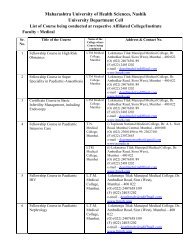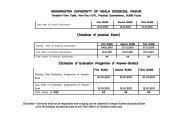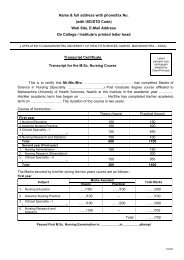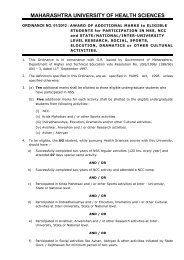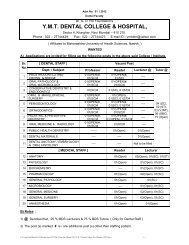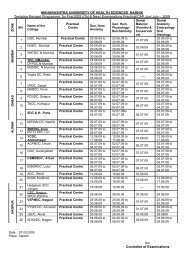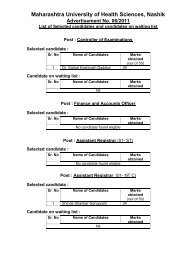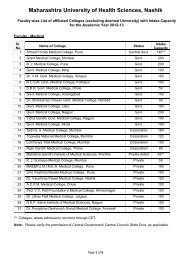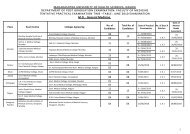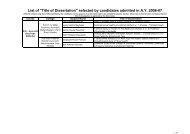Unit I
Unit I
Unit I
You also want an ePaper? Increase the reach of your titles
YUMPU automatically turns print PDFs into web optimized ePapers that Google loves.
Hair: In humans, hairs are not important to keep body warm as in other mammals but are important inrepair of skin. In humans, skin is not very hairy. No hair follicles are formed after birth. Terminal hairsdevelop at puberty.Hair follicle (LP): Structure of hair is different from hair follicle. Hair has shaft or visible part, and a root,which is embedded in the skin within the follicle. Hair is composed of central medulla, middle cortex andoutermost cuticle. Epidermal down growth is the hair follicle and its terminal (deeper) expansion is the hairbulb. Invagination of the dermis in the concavity of the bulb is the hair papilla.A hair follicle shows twocoats inner and outer coats. Inner coat is epithelial and outer coat is dermis of the skin. The inner coatshows inner root sheath and outer root sheath. Inner root sheath is made up of outer Henle’s layer, middleHuxley’s layer and outermost cuticle of inner root sheath. Outer root sheath is the continuation of stratumbasale and stratum spinosum layers of the epidermis. Arrector pilorum is the smooth muscle extendingfrom the hair follicle to the dermis.Hair follicle (HP):Melanocytes close to hair papilla produce melanin which is taken by cortex formingepithelial cells which are undergoing process of keratinisation. Following layers can be studied under highpower.i) Medulla: It is made up of cornified cells forming two or three layers. Air spaces are present in betweenand sometimes within the cells. Medulla may be absent in the cell. Keratin of the medulla is soft.ii) Cortex: It shows many layers of cuboidal or cornified cells. Pigment granules are present in these cells.Keratin of cortex is hard.iii) Cuticle of hair: There are thin flat scale like single layer of cells arranged like shingles on the side of ahouse except that their free edges point upward. These free edges interlock with those of inner root sheath.This makes it difficult to pull out a hair without atleast a part of inner root sheath coming out with it. This isof medicolegal interest.iv) Henle’s layer: It is formed by a single layer of cuboidal cells. It is the outermost layer. Nuclei areflattened.v) Huxley’s layer: It consists of a number of rows of elongated cells containing tricohyaline granules, whichappear eosinophilic.vi) Cuticle of inner epithelial root sheath: This layer is similar to the cuticular layer of the hair. It liesagainst the cuticle of the hair and consists of flattened cornified cells.Nail: A nail shows root, body and free edge. The nail root is covered by proximal nail fold and rests on thegerminal matrix while the body of the nail lies on the sterile matrix. Epidermis of the skin from the nail lieson the sterile matrix. Epidermis of the skin from the nail fold continues as germinal matrix and then furtheras sterile matrix. The nail substance is formed by the proliferation of cells in the germinal matrix, which isthicker than the sterile matrix. Usual dermal papillae are not seen in the sterile matrix. The stratum corneumlining the deep surface of the proximal nail fold extends for a short distance on to the surface of the nail.This is eponychium. Similarly, hyponychium is seen on the undersurface of the free distal edge of the nail.The slide may show the distal phalanx (bone) covered by articular cartilage and vessels, nerves,muscles, fibrous tissue etc.Notes:65



